Star Trek Featured These Real Life History Icons With Insane Explanations
Despite Star Trek taking place in the far future, a weird staple of this Paramount franchise is that our protagonists just keep running into historical figures. And the only thing funnier than seeing members of Starfleet side-by-side with famous historical figures is seeing how Trek justified their presence. With that in mind, here’s a breakdown of our favorite Star Trek historical cameos and the often insane explanations behind why they popped up on the show.
Star Trek: The Original Series – “The Savage Curtain” – Abraham Lincoln & Genghis Khan
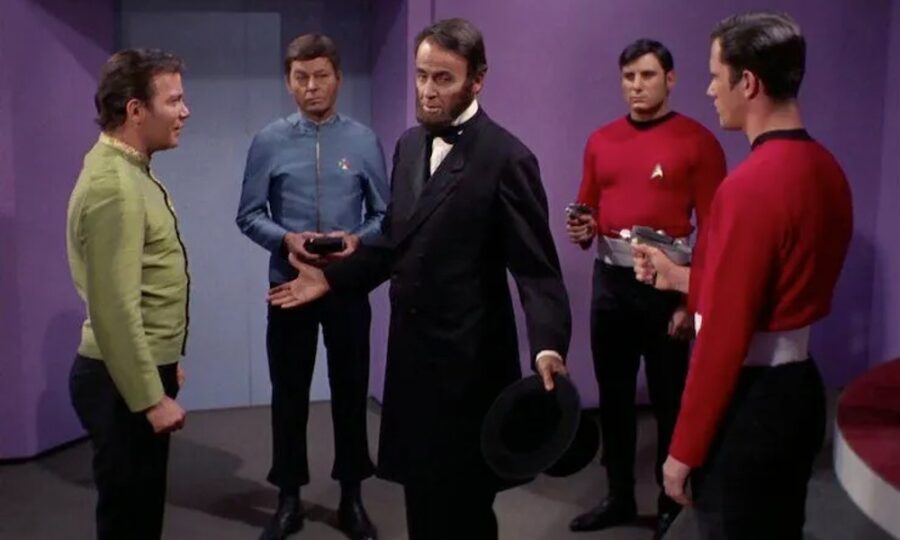
While only the biggest Star Trek nerds remember the episode by name, “The Savage Curtain” is the best example of the franchise bringing in historical figures, including Genghis Khan. However, due to the hilarious sight of the former president on the Enterprise bridge viewscreen, this is known as “the Star Trek episode where they meet Abraham Lincoln.”
In addition to Lincoln, this Star Trek episode proves some important in-universe historical figures, including Klingon leader Kahless and Vulcan leader Surak. But rather than being an important or ambitious episode, this ended up being yet another experiment from vaguely godlike aliens. They wanted to see whether good or evil would triumph, but instead of debating such philosophy in a college classroom, they used their powers to create history’s weirdest version of Celebrity Deathmatch.
Star Trek: The Next Generation – “Time’s Arrow” – Mark Twain & Jack London
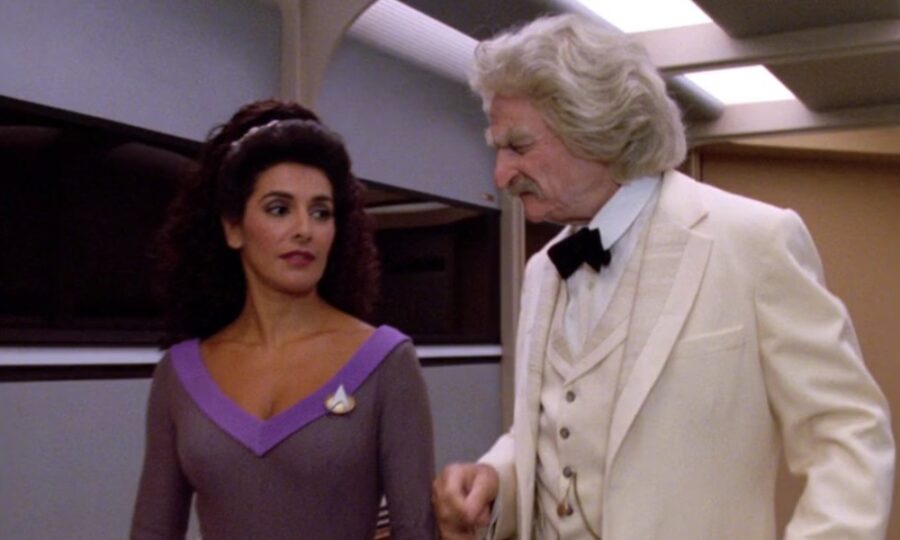
Star Trek: The Next Generation made fewer trips to the historical figure well as The Original Series, but when the show did go to that well, it drank deep. We can see that in “Time’s Arrow,” an episode in which Commander Data and much of the bridge crew encountered the major historical figures Mark Twain and Jack London.
That Star Trek adventure ends in the craziest possible way: with historical figure Mark Twain traveling to the future and seeing Captain Picard blow up an alien habitat to keep the aliens from snacking on Earthlings in the past. Fans were quite delighted to see Mark Twain in Star Trek, so much so that Lower Decks recently brought him back as a fan-favorite holodeck fantasy of Boimler and Rutherford (they solve problems by each simultaneously roleplaying as the famous author).
Star Trek: The Next Generation – “Descent” – Albert Einstein, Sir Isaac Newton, and Stephen Hawking
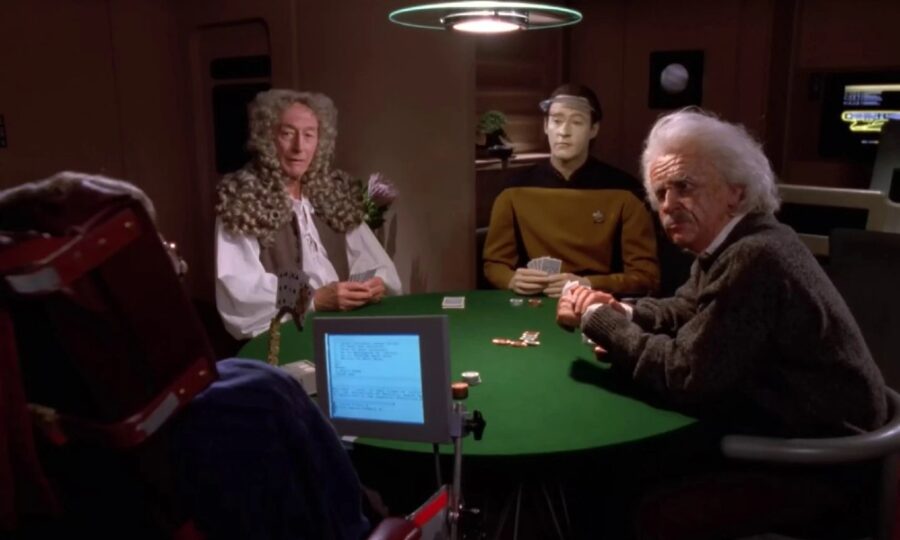
Speaking of holodeck fantasies, Star Trek: The Next Generation brought in several historical figures as part of a program favored by Commander Data. The figures in question included Albert Einstein, Sir Isaac Newton, and then-living scientist Stephen Hawking. In addition to giving Hawking an interesting cameo, it was fun seeing the android play poker against these famous men.
When asked, Data explained that he wanted to see how these different historical figures would interact. That sounds fair enough until you consider that Data’s own brain is more advanced than the holodeck algorithms. If this Star Trek character really wanted to see how historical figures interact, he could have run the simulations inside his own brain instead of taking up space inside the holodeck (Riker probably needs it for something he sarcastically wrote down as “trombone lessons”).
Star Trek: Voyager – “Death Wish” – Sir Isaac Newton
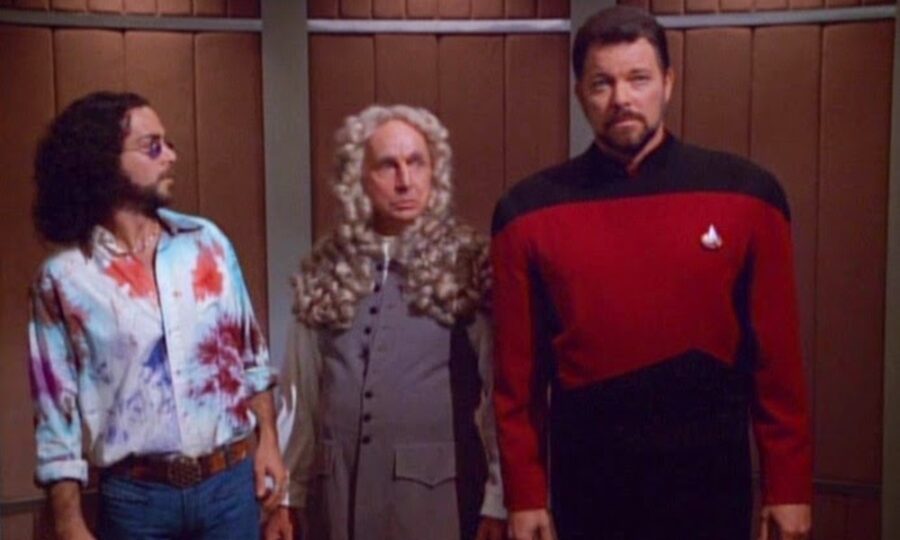
While Sir Isaac Newton had already appeared in TNG, Star Trek: Voyager decided to bring this historical figure back in the episode “Death Wish.” This time, though, Newton was no hologram. Instead, he was the real deal, plucked from time and space by Q to testify about how a fellow member of the Q Continuum (Quinn) had helped kickstart his theories (Quinn rattled the tree, causing the apple to fall).
It’s a fun moment and an example of the truly quirky humor Star Trek: Voyager is known for. However, it’s much stranger when you sit back and think about how powerful beings like Q are willing to risk destroying the entire future timeline of humanity by randomly plucking historical figures into the future to make a quick character reference.
Star Trek: Voyager – “The ’37s” – Ameila Earhat and Fred Noonan
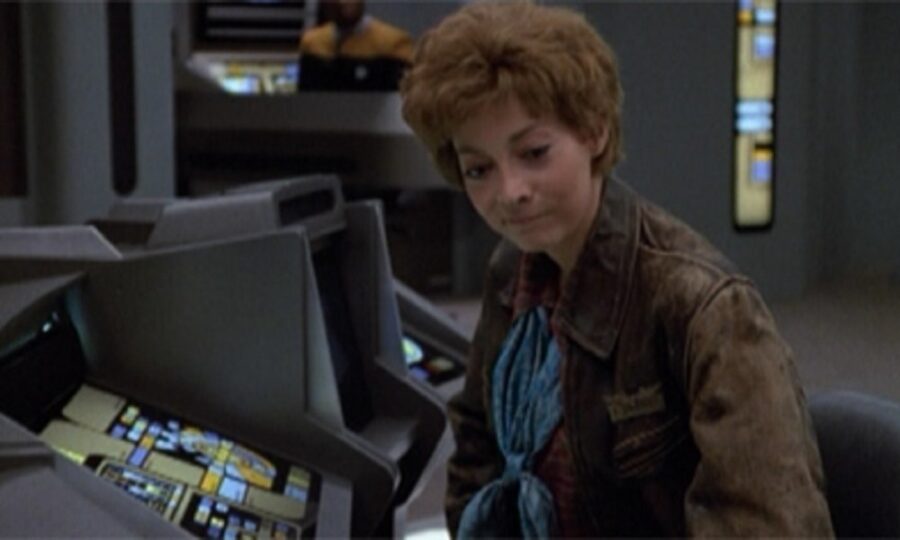
The final fate of Amelia Earhart and her navigator, Fred Noonan, is something we still argue and speculate about today. However, Star Trek: Voyager put forth the craziest theory regarding these historical figures: that they were kidnapped by aliens and survived in a kind of cryogenic freeze until Captain Janeway thawed them out.
Taken on its own, the story is fairly interesting, especially because it involves most of the other 300 kidnapped humans rebelling against the aliens and achieving their freedom. However, it’s downright weird to think that it’s canonical in the Star Trek universe that bizarre aliens from the other side of the galaxy were vacuuming up slave labor from Earth even as the planet lurched toward World War II.
Star Trek: Voyager – “Scorpion” and “The Raven” – Leonardo da Vinci
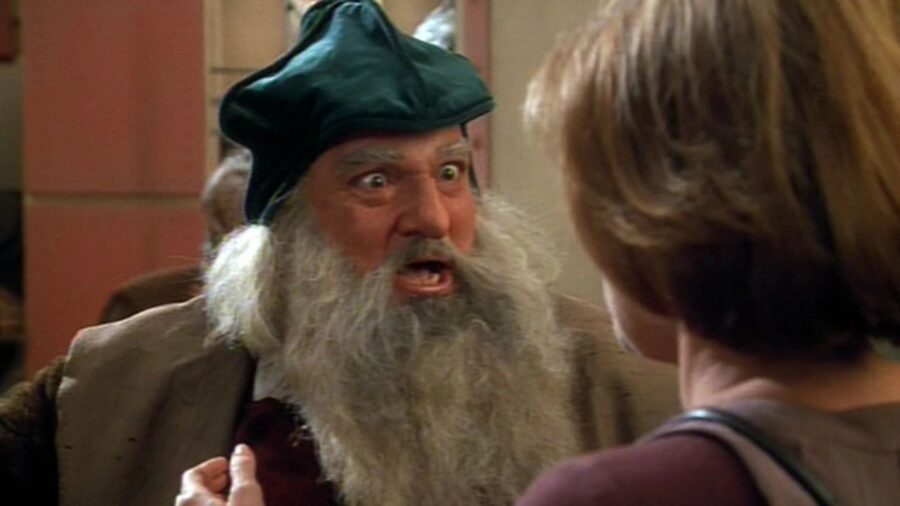
Depending on which Star Trek: Voyager fans you talk to, “Scorpion” is often cited as the episode where the series got really good. It introduced fan-favorite character Seven of Nine, the new Species 8472, and (for better or for worse) brought the Borg into the show. Weirdly enough, it also introduced us to how Captain Janeway relaxes: by hanging on the holodeck with historical figure Leonardo DaVinci.
If we’re being honest, it is one of Star Trek’s coolest moments with a historical figure: John Rhys Davies is perfect as the Renaissance man, and he and Kate Mulgrew have great chemistry. But this interaction is still funny because it proved that some of Janeway’s craziest decisions (Tuvix, anyone?) were most likely fueled by whatever random thing her holographic Leonardo DaVinci blurted out from week to week. Maybe if this guy had a hot take on the Caretaker everyone would have made it back home at the end of the pilot episode.












